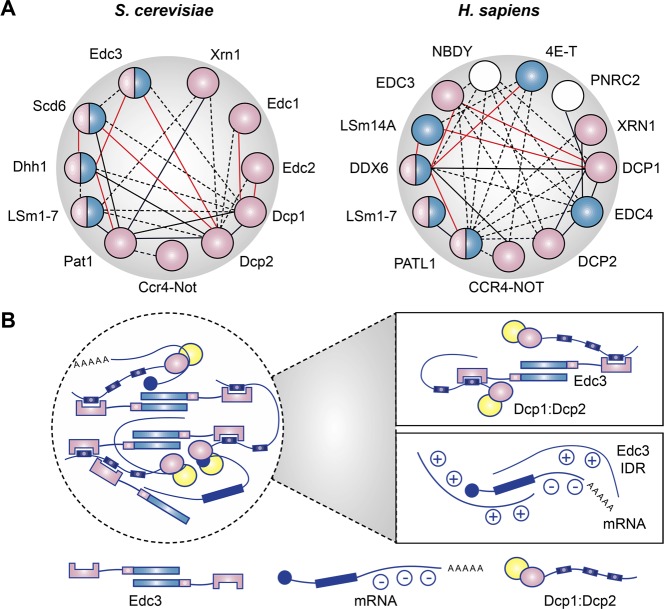Figure 2.
Factors that drive P-Body assembly and liquid–liquid phase separation (LLPS). (A) Interactions between P-body proteins. Components critical to P-body assembly are colored in blue, which include P-body proteins required for the maintenance of pre-existing P-bodies and factors that affect the induction of new P-bodies by arsenite or vinblastine treatment, cold shock,1 or glucose depletion.2 Components colored in pink directly interact with RNA.3−8 Solid black lines indicated direct protein–protein interactions, and red lines indicate mutual exclusiveness. Dotted black lines suggest indirect or putative interactions. Only interactions with at least two sources of evidence derived from BioGRID are included (except for PatL1, whose interaction with many P-body components is not well covered in the database9,10). (B) Intermolecular interactions that promote LLPS. Upper box: simultaneous protein–protein interactions between intrinsically disordered regions (IDRs) and dimerization of P-body components.11 Lower box: association between positively charged IDRs of P-body components such as Edc313 with RNA transcripts promotes phase separation, possibly through electrostatic14 and cation−π interactions.

